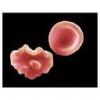Reputation Activity
-
 jlmoses got a reaction from Dr. Pepper in Anyone going to the NE Lab Fall Conference in Portland in Oct?That is wonderful, Phil I can't wait to get our catalogs! Hope to see you there. Jonilynn
jlmoses got a reaction from Dr. Pepper in Anyone going to the NE Lab Fall Conference in Portland in Oct?That is wonderful, Phil I can't wait to get our catalogs! Hope to see you there. Jonilynn
-
 jlmoses got a reaction from R1R2 in Blood Transport to FloorWe have changed from clear ziplocks to insulated lunch bags. We place a small gelpak (not frozen) in with the unit. If the unit is returned to us, we check the temp as we always have. Only now the temp stays almost identical to the temp when removed from the fridge.
jlmoses got a reaction from R1R2 in Blood Transport to FloorWe have changed from clear ziplocks to insulated lunch bags. We place a small gelpak (not frozen) in with the unit. If the unit is returned to us, we check the temp as we always have. Only now the temp stays almost identical to the temp when removed from the fridge.
-
 jlmoses got a reaction from tbostock in When to perform testing after transfusion.Thank you all for your posts. I found an article from ARC:ractice Guidelines for Blood Transfusion: A Compilation from Recent Peer-Reviewed Literature.
jlmoses got a reaction from tbostock in When to perform testing after transfusion.Thank you all for your posts. I found an article from ARC:ractice Guidelines for Blood Transfusion: A Compilation from Recent Peer-Reviewed Literature.
RBC 15 minutes to 1 hour
PLTS 10 minutes to 1 hour and
FFP immediately prior and post transfusion.
T&T would like hospital wide consistency and with the push for Patient Blood Management, this would be a great time to incoporate.
-
 jlmoses got a reaction from L106 in When to perform testing after transfusion.Thank you all for your posts. I found an article from ARC:ractice Guidelines for Blood Transfusion: A Compilation from Recent Peer-Reviewed Literature.
jlmoses got a reaction from L106 in When to perform testing after transfusion.Thank you all for your posts. I found an article from ARC:ractice Guidelines for Blood Transfusion: A Compilation from Recent Peer-Reviewed Literature.
RBC 15 minutes to 1 hour
PLTS 10 minutes to 1 hour and
FFP immediately prior and post transfusion.
T&T would like hospital wide consistency and with the push for Patient Blood Management, this would be a great time to incoporate.
-
 jlmoses reacted to Dr. Pepper in RBCto FFP ratioAt our recent ASCLS-CNE meeting in Providence, there were a couple of lectures on this very subject. As several posters have noted, there is not a clear consensus as to the optimum component ratio. The point was made that just having a massive transfusion protocol in the first place to ensure a smooth, quickly available stream of components was very important, regardless of slight differences in the magic ratio. There was a great panel discussion at the MABB meeting a few weeks earlier looking back at the Boston Marathon bombing a year ago, where these protocols were put to the test. The speakers included a hospital safety officer, an ER nurse manager and a blood bank supervisor, from different Boston hospitals. The hospitals did a terrific job dealing with the victims, helped by several factors:
jlmoses reacted to Dr. Pepper in RBCto FFP ratioAt our recent ASCLS-CNE meeting in Providence, there were a couple of lectures on this very subject. As several posters have noted, there is not a clear consensus as to the optimum component ratio. The point was made that just having a massive transfusion protocol in the first place to ensure a smooth, quickly available stream of components was very important, regardless of slight differences in the magic ratio. There was a great panel discussion at the MABB meeting a few weeks earlier looking back at the Boston Marathon bombing a year ago, where these protocols were put to the test. The speakers included a hospital safety officer, an ER nurse manager and a blood bank supervisor, from different Boston hospitals. The hospitals did a terrific job dealing with the victims, helped by several factors:
-The bombing occured around 2:45, so the hospitals took advantage of having both first and second shift staff available.
-The race finish already had medical staff, facilities and ambulances available.
-Several large, excellent hospitals were just minutes away.
-The patients started arriving at the hospitals within 15 minutes of the bombing. Some were in the OR within 10 minutes of arrival.
-These hospitals, being trauma centers, had massive transfusion policies in place, and were well practiced in their application.
The take home message was that this can happen anywhere, any time, and we should be ready, even if we work at smaller community hospitals (like mine) that have an ER but normally don't get the gory trauma patients.
-
 jlmoses reacted to tbostock in When to perform testing after transfusion.See attached for support that 15 minutes is adequate for red cells.
jlmoses reacted to tbostock in When to perform testing after transfusion.See attached for support that 15 minutes is adequate for red cells.
For platelets, if we are accessing for refractoriness, we have them do a post-tx platelet count at 30 minutes to look for a bump.
Early changes in hemoglobin after RBC transfusion.pdf
-
 jlmoses reacted to tbostock in Blood Transfusion Consent form consistent with Patient Blood ManagementRisks of Blood Transfusion, rev Nov 2013.docPatient Blood Transfusion Information, rev Nov 2013.docWe do not discuss specific risks on the form. Just a general "my physician has discussed the risks, benefits, and alternatives...has discussed consequences of refusing, etc". And "I have been provided written info about the risks, benefits, and alternatives if requested".
jlmoses reacted to tbostock in Blood Transfusion Consent form consistent with Patient Blood ManagementRisks of Blood Transfusion, rev Nov 2013.docPatient Blood Transfusion Information, rev Nov 2013.docWe do not discuss specific risks on the form. Just a general "my physician has discussed the risks, benefits, and alternatives...has discussed consequences of refusing, etc". And "I have been provided written info about the risks, benefits, and alternatives if requested".
We have a list of actual risks on our hospital intranet for our physicians, because most of them have never heard of TRALI or TACO honestly.
So if the patient really wants to know more, we have a patient information form that is a little more general and easy to understand.
-
 jlmoses reacted to catm in Cold antibodyWe have a group O patient who has irregular results by Ortho IAT. 14 out of 22 cells are reactive (+) to 2+ reactions (all normal antibodies ruled out) The auto is negative and DAT is neg, In the RT direct tube tests all panel cells plus Oi cord sample are positive 2+ but the auto control is negative. Could this be an anti-H or would you expect stronger reactions? We do not have anti-H available to test the patient. Also wondered about anti-Vel?
jlmoses reacted to catm in Cold antibodyWe have a group O patient who has irregular results by Ortho IAT. 14 out of 22 cells are reactive (+) to 2+ reactions (all normal antibodies ruled out) The auto is negative and DAT is neg, In the RT direct tube tests all panel cells plus Oi cord sample are positive 2+ but the auto control is negative. Could this be an anti-H or would you expect stronger reactions? We do not have anti-H available to test the patient. Also wondered about anti-Vel?
-
 jlmoses got a reaction from jayinsat in recommendation for small scale for ECHO maintenanceI found where I got the coupon. Give it a try you might just find something www.rightonscales.com/web/my-weigh/
jlmoses got a reaction from jayinsat in recommendation for small scale for ECHO maintenanceI found where I got the coupon. Give it a try you might just find something www.rightonscales.com/web/my-weigh/
-
 jlmoses got a reaction from jayinsat in recommendation for small scale for ECHO maintenanceWe have been using a DURASCALE 100 from MY WEIGH. It is great. You should look on line for a coupon for MY WEIGH. I don't remember where I found it but it dropped the price to $42.00. It has a lifetime/30 year warrenty. Never had to calibrate as it stays the same. Have used it for 7 years.
jlmoses got a reaction from jayinsat in recommendation for small scale for ECHO maintenanceWe have been using a DURASCALE 100 from MY WEIGH. It is great. You should look on line for a coupon for MY WEIGH. I don't remember where I found it but it dropped the price to $42.00. It has a lifetime/30 year warrenty. Never had to calibrate as it stays the same. Have used it for 7 years.
-
 We do pre-admit specimens up to 2 weeks before the procedure if the patient has not been pregnant or transfused in the past 3 months. We have been willing to use the specimen to do gel crossmatches until 3 days after the procedure (might be as much as 17 days from collection but usually isn't that long). We usually set up the units the day before surgery (on all pre-admits, not just those with antibodies) so as not to tie them up unnecessarily. We could have to set up additional units in the few days after surgery too. We do not freeze the samples. This policy was in place before I came here and was probably created with negative antibody screens in mind. The reason we all do AHG xms in patients with antibodies is as a double-check on our unit antigen typing and to catch antibodies to low -frequency antigens, right? So how long will antibodies remain active enough in the sample to cause an incompatible crossmatch with that mis-typed unit or the one with the low-incidence antigen? Does anyone have data on how long the usual antibodies we identify tend to remain stable in a refrigerated specimen? And do you know how long antibodies to low-frequency antigens can be trusted to remain stable? Obviously any antibody can do whatever it wants and it depends on the original strength. I know that Kidd system antibodies tend not to store well, while Rh antibodies do. What's a reasonable rule of thumb that will prevent patient harm? Must we do all gel xms before the specimen is 3 days old, 7 days old or???? Our manufacturer's instructions seem to be getting more vague over time. I don't see anything in them that would say we can't use the specimen at 17 days.
We do pre-admit specimens up to 2 weeks before the procedure if the patient has not been pregnant or transfused in the past 3 months. We have been willing to use the specimen to do gel crossmatches until 3 days after the procedure (might be as much as 17 days from collection but usually isn't that long). We usually set up the units the day before surgery (on all pre-admits, not just those with antibodies) so as not to tie them up unnecessarily. We could have to set up additional units in the few days after surgery too. We do not freeze the samples. This policy was in place before I came here and was probably created with negative antibody screens in mind. The reason we all do AHG xms in patients with antibodies is as a double-check on our unit antigen typing and to catch antibodies to low -frequency antigens, right? So how long will antibodies remain active enough in the sample to cause an incompatible crossmatch with that mis-typed unit or the one with the low-incidence antigen? Does anyone have data on how long the usual antibodies we identify tend to remain stable in a refrigerated specimen? And do you know how long antibodies to low-frequency antigens can be trusted to remain stable? Obviously any antibody can do whatever it wants and it depends on the original strength. I know that Kidd system antibodies tend not to store well, while Rh antibodies do. What's a reasonable rule of thumb that will prevent patient harm? Must we do all gel xms before the specimen is 3 days old, 7 days old or???? Our manufacturer's instructions seem to be getting more vague over time. I don't see anything in them that would say we can't use the specimen at 17 days.
-
 I would like to know what type of warm pack/container do your facility use for keeping the sample "warm" during the transport to the lab for cold agglutinin screen? Our facility uses the "baby heel warmer pack" to wrap around the sample. If they cannot found the baby heel warmer then they will keep the sample in a cup of warm water and deliver the sample to the lab "stat". Is this acceptable? Thanks.
I would like to know what type of warm pack/container do your facility use for keeping the sample "warm" during the transport to the lab for cold agglutinin screen? Our facility uses the "baby heel warmer pack" to wrap around the sample. If they cannot found the baby heel warmer then they will keep the sample in a cup of warm water and deliver the sample to the lab "stat". Is this acceptable? Thanks.
-
 jlmoses got a reaction from mrhelton in Automation result vs Tube resultWe have an Echo. We have had this sort of reactivity on the Echo and then negative on bench. Then, several months later, we found an Anti-E. We also had the same thing and then later picked up a Jka. Both specimens were sent to a reference lab and nothing was picked up. We had positive reactions that looked like an iffy E , sent to reference and they got negative reactions; only to receive information from the patients family that "years ago, he had something in his blood and he needed special units when he was in Florida. Calling the FL. hospital, he had an anti-E! Immucor has a "teaching" section on their web site. Picking up anti Es before other methods was discussed. I have heard from other area hospitals that Jka is also being picked up by them. I certainly do a complete xm on any pts with a question. It's sort of funny as I have made an appt to review this with our pathologist and medical director this afternoon. jl
jlmoses got a reaction from mrhelton in Automation result vs Tube resultWe have an Echo. We have had this sort of reactivity on the Echo and then negative on bench. Then, several months later, we found an Anti-E. We also had the same thing and then later picked up a Jka. Both specimens were sent to a reference lab and nothing was picked up. We had positive reactions that looked like an iffy E , sent to reference and they got negative reactions; only to receive information from the patients family that "years ago, he had something in his blood and he needed special units when he was in Florida. Calling the FL. hospital, he had an anti-E! Immucor has a "teaching" section on their web site. Picking up anti Es before other methods was discussed. I have heard from other area hospitals that Jka is also being picked up by them. I certainly do a complete xm on any pts with a question. It's sort of funny as I have made an appt to review this with our pathologist and medical director this afternoon. jl
-
 jlmoses reacted to KathleenSL in SCARF siteDoes anyone know what happened to the SCARF site?
jlmoses reacted to KathleenSL in SCARF siteDoes anyone know what happened to the SCARF site?




